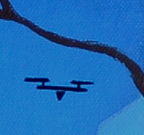A Grid Is Not Like A Chequebook
“Annual income twenty pounds, annual expenditure nineteen nineteen and six, result happiness. Annual income twenty pounds, annual expenditure twenty pounds ought and six, result misery.” — Mr Micawber, Charles Dickens
On the front pages of newspapers, electricity grids are often talked about as if they were bank accounts. Enough energy goes into the grid to meet demand, result happiness, too little, result misery.
In reality, it’s a bit more complicated than that. Beyond adequate supply, there are two further problems a grid faces. The first is time, the second, space.
Time & The Laws of Physics
The time issue is one most of us are familiar with. As we discussed in our grid primer, there isn’t a great deal of storage capacity in a grid. Energy storage is very expensive and it’s likely to remain so for many years. Traditionally, the way grids handle this is that power is generated and fed in at more or less the same time there is demand for it. It matches the famous daily demand curve. That’s called system balancing.
UK Daily Demand © 2011 National Grid plc, all rights reserved
This is fine when electricity can be generated as and when required, e.g. by burning gas. It is a problem when we have less control over when it’s generated, which is the case for solar and wind.
Space
Time, however, is not the only issue. Power also cannot be moved instantly, or effortlessly or, most importantly, always safely from one location to another.
Velocity Is Not The Problem
The issue here isn’t speed. On a wire, electricity “moves” (i.e. becomes available at some point further down the wire) at the speed of light. On national grids, if that velocity could be achieved everywhere with no side effects then, for our purposes, we could treat the grid as a point source. Mr Micawber’s chequebook model would be true, and if enough power were going in to match demand, we’d all be happy (actually in Britain we’d just be complaining marginally less about it ;-).
(Aside for internet folk: for the internet, the speed of light is not fast enough. However, grid applications are less latency sensitive than Internet ones and the distances involved are shorter.)
Heat (Entropy) Is The Problem
Unfortunately, national grids aren’t superconducting, and there is a side effect when electricity travels on a wire that has any resistance — the wire gets hot.
If a wire gets a little hot, you waste energy. If it gets very hot, it can burn out. When connections burn out, the power has to go somewhere else, resulting in potentially more overloaded wires, which could burn out too, leading to a cascading failure. That’s not good.
Overloads need to be avoided. That means power has to be removed from grids or steered towards connections that can handle it. In short, national grids have to continually engage in a balancing act. They must make sure there is enough energy to meet demand, but never too much in the wrong place.
Unfortunately, it’s not enough simply to minimize the distance electricity has to travel. Everything depends on what it’s travelling through. As grid expert Mat Roderick points out, “Just to confuse things, the longer the wire the more resistance but the thicker the wire the less resistance. So long thin wires are very bad, short fat wires are very good.” You also have current vs voltage in the mix. Your school physics is still true and you can transmit more power on a wire if you step up the voltage. However, the further electricity has to travel, the more complex the system potentially becomes and the greater the risk you’ll make an error and get too much current on a connection that can’t handle it.
A Tricky Balancing Act
Grid balancing is a vital but underrated task and it is only going to get harder. In the next post we’ll look at some of the data that already helps with it.
Photo by Loic Leray on Unsplash
